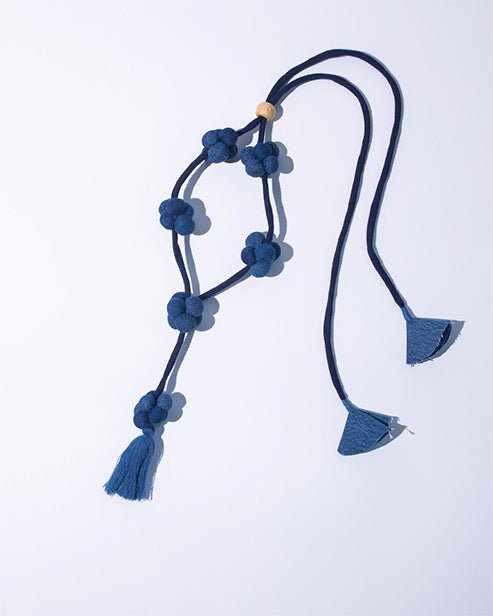Do you know the difference between vegan leather and leather? Do you also need clarification about the concept of faux leather? Don’t worry; we have got you covered. If you’re a sustainable fashion enthusiast, you’ve probably heard about the concept of vegan leather in the last few years.
In this blog, we will be talking about everything related to vegan leather, and then you can decide for yourself whether it is environmentally friendly or not.

The Origin Of Vegan Leather
Vegan leather, popularly known as faux leather, has become insanely popular in recent years. The rise of vegan leather gained a massive following when the world became aware of animal cruelty. Although the existence of vegan leather came to light way earlier than you might think.
Germany, in the late 19th century, created a kind of fake/ false leather called Presstoff. And, by the next century, America followed the lead, and an American brand called Naugahyde created the first globally renowned imitation leather. But it wasn’t famous until millennials started using the phrases (Vegan and Faux) and made it popular by backing it with the cause of reducing animal cruelty and saving the environment. Later, in the 20th century, millennials raised another concern about the environment and drove the world to purchase sustainable products. From clothes to make-up, everything should be sustainable.
Although the rise of vegan leather has been more closely tied to animal rights than to environmentalism, it also had an impact on leather as vegan lifestyles began to be linked to environmental activism. Veganism has insane advantages for the environment and your health. Vegan substitutes, like vegan leather, are not necessarily more environmentally friendly or sustainable.
You should also read: If animal leather is cruel, what about vegan faux leather?
Vegan Leather Is Environment Friendly: The Myth
If you think vegan leather is environmentally friendly, it isn’t. There’s no doubt in saying that vegan leather is one of the solutions to stop animal cruelty, but is it the best possible solution? Absolutely not. Leather is made from the hides of animals such as ostriches, crocodiles, goats, pigs, and sheep. On the other hand, vegan leather is typically made from a variety of synthetic materials, each with its own environmental implications. Here are some common materials used in vegan leather production:
Polyurethane (PU): This is one of the most popular vegan leather options in the entire world. It's made by applying a polyurethane coating to a fabric base, often polyester. It is of course, animal friendly, but the chemicals used to build this material are insanely harmful to the environment. In recent studies, it has been established that PU can damage the livelihood of both humans and animals in the future.
Polyvinyl Chloride (PVC): PVC leather, also known as vinyl leather, is another synthetic option. Like PU, PVC is derived from petroleum. PVC production is known to release toxic chemicals and gases, making it less eco-friendly compared to other vegan leather materials.
Plant-Based Alternatives: Some companies are now using innovative plant-based materials like mushroom leather, pineapple leather (Piñatex), and apple leather. These options are generally more sustainable as they use renewable resources and generate fewer harmful byproducts.
Recycled Materials: Recycling plays a crucial role in sustainable fashion. Some vegan leather products are made from recycled materials, such as plastic bottles or discarded textiles. This helps reduce waste and lowers the environmental impact.
Is Vegan Leather More Sustainable Than Leather?
As we noted above, vegan leather isn’t actually safe for our environment. For instance, buying a faux/ vegan leather product every other year is more harmful to the environment than buying a leather product.
Therefore, the answer between leather and vegan leather truly comes down to how the item was made, how you want to use it, and what matters most to you individually.
Sustainable point of view:
Buying a sustainable, pure leather product that is certified, is made of good material, and holds high quality is far better than buying any vegan leather product that cannot be used after several uses.
Vegan leather products hold materials that can’t be recycled easily, and leather, on the other hand, can be recycled far more easily.
However, from an ethical perspective, vegan leather makes more sense than genuine leather. Vegetarians and vegans can eat it too.
But the real question is- is vegan leather harmless for the environment and better than animal leather?
Vegan Leather vs Animal Leather: The Truth
It's a bit of a mixed bag. Vegan leather does have several eco-friendly advantages over animal leather. Yes, it reduces the demand for animal agriculture, uses fewer natural resources, and can be made from innovative and sustainable materials. However, it's not without its own environmental challenges.
The production of synthetic vegan leather can involve chemicals and toxins, and some materials, like PVC, have a more negative environmental impact than others. Additionally, the disposal of vegan leather can be problematic if not handled responsibly.
Vegan leather offers a promising alternative to traditional animal leather, but it's essential to think about it and make the right choice. While it can reduce the environmental impact in many ways, it's not a one-size-fits-all solution.
Choosing sustainable vegan leather options and supporting responsible practices in its production and disposal can help ensure that this leather alternative lives up to its eco-friendly potential.
So, at its very core, it comes up to you, what’s your choice, and what do you believe is less harmful to the environment? As far as sustainability is concerned, animal leather holds an advantage over vegan leather and is a bit less harmful to the environment.







